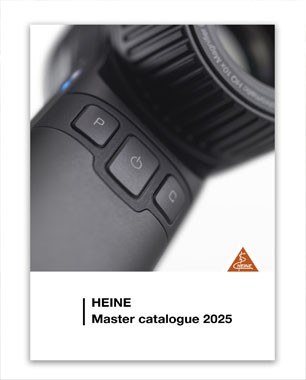Tuning forks are mainly used in medicine for diagnostic purposes, particularly in neurology and ear, nose and throat medicine. They are simple but very effective tools for assessing hearing and the sense of vibration. Here is an overview of the most important applications:
? 1. hearing diagnostics
The tuning fork test is a simple test to differentiate between conductive and sensorineural hearing loss. The two most important tests are
Rinne test
- Comparison of air conduction (tuning fork next to the ear) with bone conduction (tuning fork on the mastoid).
- Normal result (positive): Air conduction better than bone conduction.
- Pathological findings (negative): Bone conduction better than air conduction → Indication of conductive hearing loss.
Weber test
- Tuning fork is placed in the middle of the skull (e.g. forehead or crown of the head).
- Patient indicates on which side the sound is heard better:
- Central (no lateralization): Normal findings or bilateral symmetrical hearing loss.
- Lateralization to the diseased side: conductive hearing loss.
- Lateralization to the healthy side: sensorineural hearing loss on the other side.
? 2. neurology - testing the vibration sensation
- Mainly used for polyneuropathies (e.g. diabetes, alcoholism or vitamin B12 deficiency).
- Tuning fork (usually 128 Hz) is placed on bony protrusions (e.g. inner ankle, metatarsophalangeal joint).
- Assessment of how long the patient feels the vibration.
- Comparison with the patient's own perception (e.g. as a doctor) helps with the assessment.
- Reduced vibration sensation → Indication of peripheral nerve damage.
? 3 Rarer applications
- Fracture diagnostics: Tuning fork can be held over the bony prominence - possible fracture sign in case of pain.
- Differentiation in tinnitus: Sometimes used to assess whether the tinnitus is influenced by bone or air conduction.
⚙️ Tuning fork frequencies used
- 128 Hz: Standard in neurology (sense of vibration).
- 512 Hz: Frequently used in audiology (close to the speech frequency range, low harmonic content).
- 256 Hz: Less frequently used as it can produce stronger overtones.
? Medical tuning fork tests - overview
| Test | Application | Procedure | Findings & meaning |
| Rinne test | Hearing test - sound conduction vs. air conduction | Tuning fork on mastoid (bone conduction), then next to the ear (air conduction) | Positive (normal): Air conduction > bone conduction Negative: bone conduction > air conduction → conductive hearing loss |
| Weber test | Hearing test - lateral localization | Place tuning fork in the middle of the forehead or crown | Tone in the middle: normal Tone lateralized to the diseased side: conductive hearing loss Tone lateralized to the healthy side: sensorineural hearing loss |
| Vibration test(128 Hz) | Neurology - Vibration sensation | Tuning fork on bony prominence (e.g. inner ankle, big toe) | Normal perception: same length as examiner Shortened perception: indication of polyneuropathy |
| Fracture test | Suspected fracture | Place tuning fork on bone distal to the suspected site | Pain on vibration: indication of fracture |
| Tinnitus test | Tinnitus differentiation | Tuning fork on head bone vs. next to ear | Assessment of whether tinnitus changes with bone/air conduction |
? Frequency overview - Which tuning fork for what?
| Frequency | Use | Special feature |
|---|---|---|
| 128 Hz | Neurology | Optimal frequency for vibration sensation |
| 256 Hz | Formerly more common, now rare | Too many overtones, rather imprecise |
| 512 Hz | Audiology / ENT | Best for hearing tests (few overtones) |
Medical tuning fork tests by specialty and application:
? 1. ENT / audiology - hearing tests
Rinne test
- Comparison between air conduction and bone conduction.
- Detects conductive hearing loss.
Weber test
- Localization of sound with bone conduction.
- Used to differentiate between sides in the case of hearing loss.
Schwabach test (rare)
- Comparison of the patient's bone conduction with that of the examiner.
- Longer bone conduction in the patient → conductive hearing loss.
- Shorter → sensorineural hearing loss.
Bing test (rare)
- Tests the effect of occlusion (e.g. by squeezing the ear canal).
- Positive Bing effect (sound becomes louder when the ear canal is closed) = normal or sensorineural hearing loss.
- No effect = conductive hearing loss.
? 2. neurology - sensitivity / polyneuropathy
Vibration test
Application of a 128 Hz tuning fork to bony points (e.g. malleolus, tibia, metatarsophalangeal joint).
Testing of vibration sensation → reduced in polyneuropathy, myelopathy, etc.
?3. orthopaedics / trauma surgery
Fracture test with tuning fork (rarely used in practice)
Apply tuning fork over the suspected bone.
Pain reaction → indication of fracture.
? 4. tinnitus test / differentiation of tinnitus
Tuning fork test for tinnitus
Assessment of whether the patient perceives the sound via air or bone conduction.
Used for differentiation: objective/subjective, peripheral/central.
? Use of tuning forks C1-C4 (1024 Hz - 4096 Hz)
Tuning forks with very high frequencies - i.e. C1 to C4 (1024 Hz to 4096 Hz) - have special but less frequent applications. They are not used in classic neurological or audiological routine diagnostics, but rather in finer, specialized tests, especially in the field of ENT, fine-tuning hearing tests or research.
? Why such high frequencies?
These high frequencies are close to the upper speech frequency range (speech: approx. 250-4000 Hz).
Early changes in the high frequency range often occur before other hearing losses.
They help to recognize:
- High frequency tinnitus
- Noise-induced hearing loss
- The onset of presbycusis (age-related hearing loss)
- Early damage due to medication (e.g. gentamicin)
A tuning fork is a precision instrument in medical diagnostics. For this reason, the tuning forks should be made of high-quality materials, as in our range. KaWe tuning forks are made of high-quality steel and guarantee the best results.







